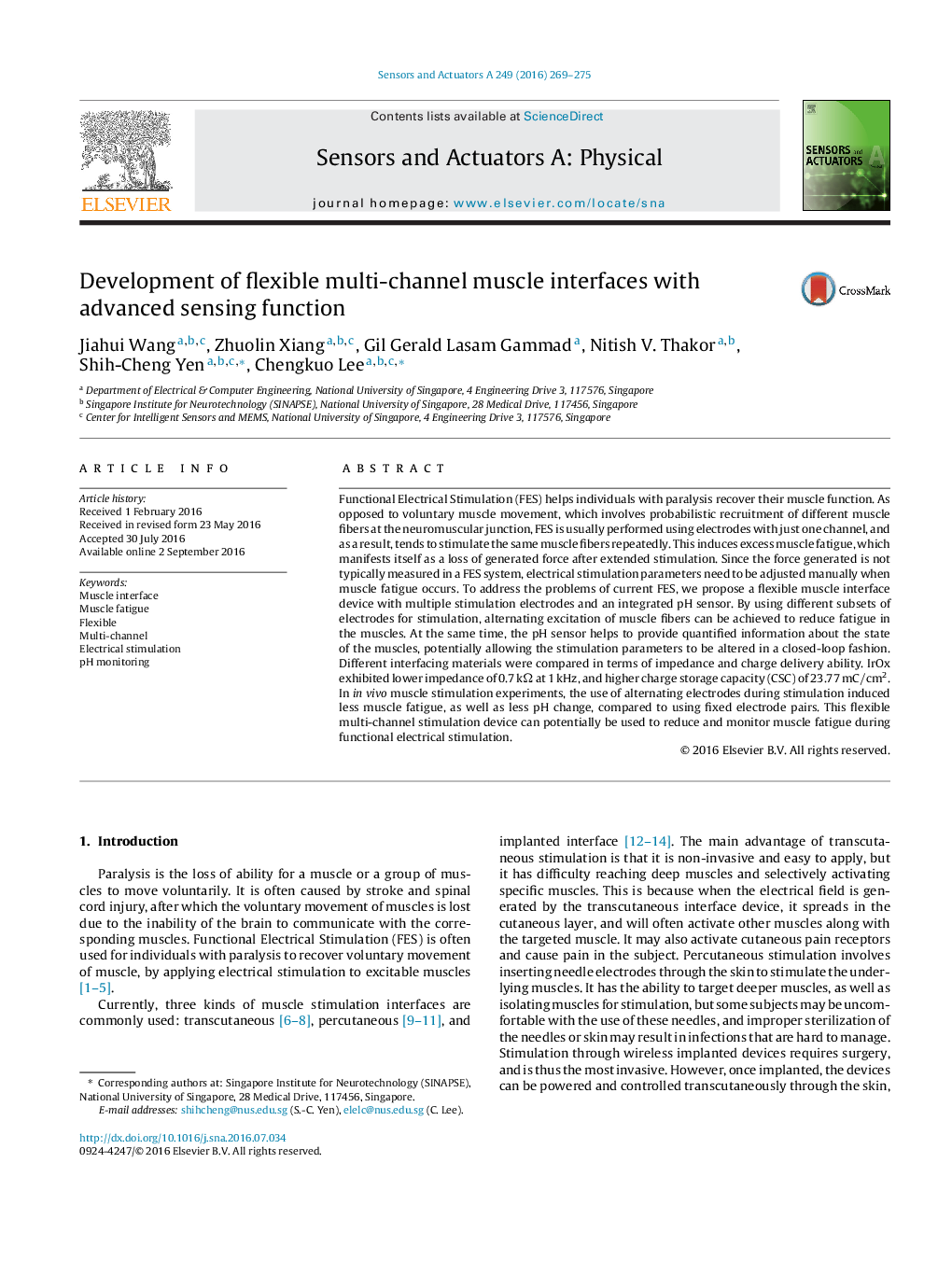| Article ID | Journal | Published Year | Pages | File Type |
|---|---|---|---|---|
| 7134270 | Sensors and Actuators A: Physical | 2016 | 7 Pages |
Abstract
Functional Electrical Stimulation (FES) helps individuals with paralysis recover their muscle function. As opposed to voluntary muscle movement, which involves probabilistic recruitment of different muscle fibers at the neuromuscular junction, FES is usually performed using electrodes with just one channel, and as a result, tends to stimulate the same muscle fibers repeatedly. This induces excess muscle fatigue, which manifests itself as a loss of generated force after extended stimulation. Since the force generated is not typically measured in a FES system, electrical stimulation parameters need to be adjusted manually when muscle fatigue occurs. To address the problems of current FES, we propose a flexible muscle interface device with multiple stimulation electrodes and an integrated pH sensor. By using different subsets of electrodes for stimulation, alternating excitation of muscle fibers can be achieved to reduce fatigue in the muscles. At the same time, the pH sensor helps to provide quantified information about the state of the muscles, potentially allowing the stimulation parameters to be altered in a closed-loop fashion. Different interfacing materials were compared in terms of impedance and charge delivery ability. IrOx exhibited lower impedance of 0.7 kΩ at 1 kHz, and higher charge storage capacity (CSC) of 23.77 mC/cm2. In in vivo muscle stimulation experiments, the use of alternating electrodes during stimulation induced less muscle fatigue, as well as less pH change, compared to using fixed electrode pairs. This flexible multi-channel stimulation device can potentially be used to reduce and monitor muscle fatigue during functional electrical stimulation.
Related Topics
Physical Sciences and Engineering
Chemistry
Electrochemistry
Authors
Jiahui Wang, Zhuolin Xiang, Gil Gerald Lasam Gammad, Nitish V. Thakor, Shih-Cheng Yen, Chengkuo Lee,
